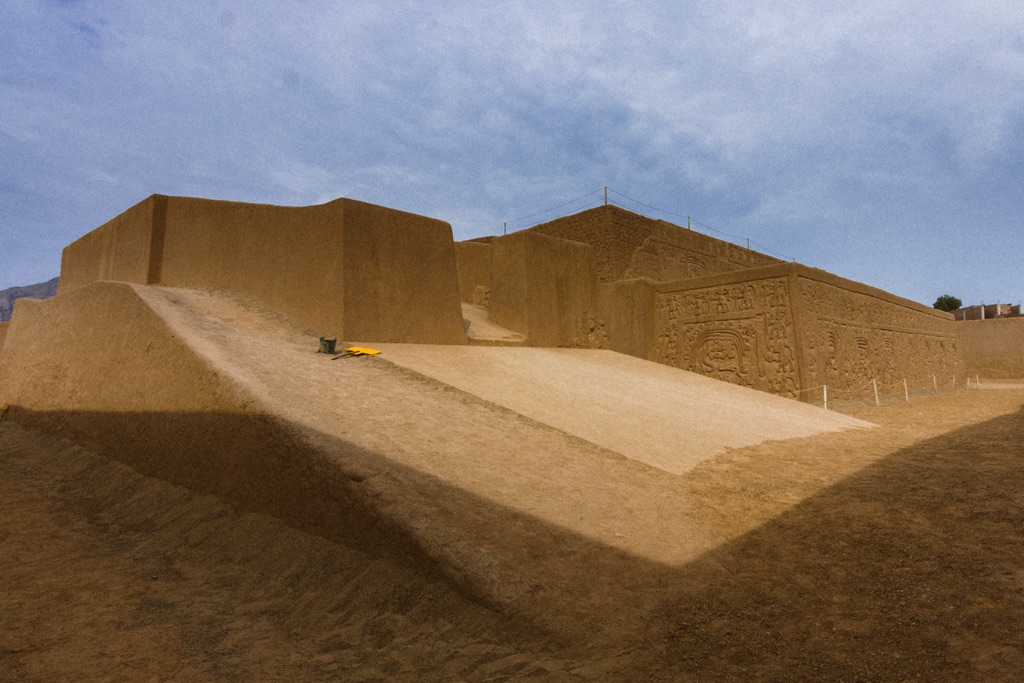Summary
Introduction to Huaca del Dragón
Discover Huaca del Dragón, a historical jewel nestled in the coastal desert of Peru. This ancient adobe pyramid is a testament to the engineering prowess of the pre-Columbian Chimu civilization. The site, also known as Huaca del Arco Iris due to its rainbow-like friezes, offers a unique glimpse into a bygone era. Its vibrant history and intricate architecture draw visitors from around the world, eager to explore its storied corridors.
Get your dose of History via Email
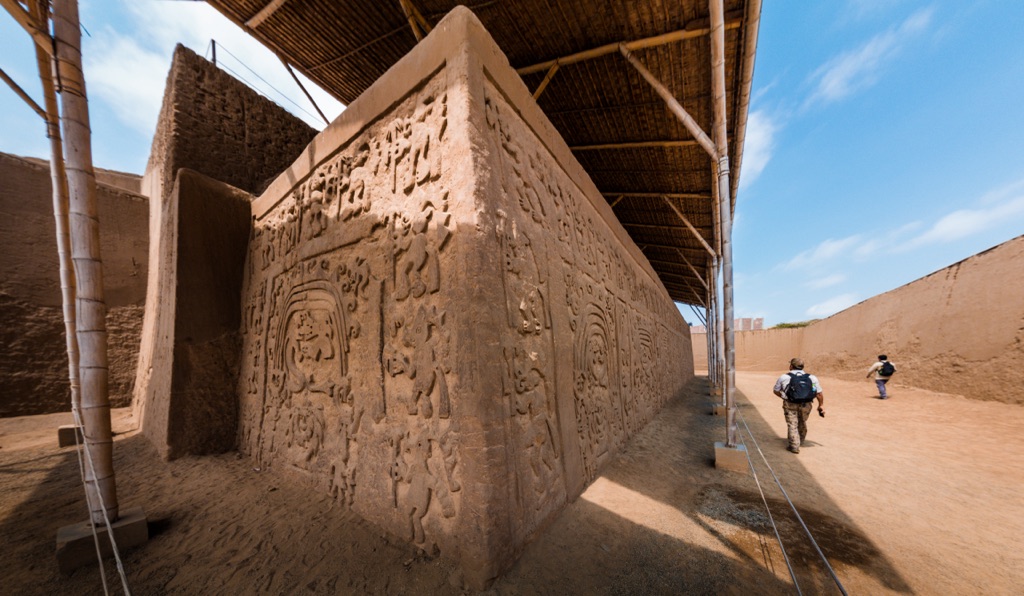
Architectural Significance and Artistry
Huaca del Dragón stands out for its remarkable design and ornamental motifs. The pyramid’s walls are adorned with mesmerizing high-relief carvings representing mythical creatures, agricultural themes, and complex geometric patterns. Each frieze painstakingly sculpted in adobe clay unveils the Chimu’s cultural values and artistic heritage. This characteristic underscores the site’s value as a key cultural reference for understanding Peru’s storied past.
Modern Rediscovery and Preservation
In the modern era, Huaca del Dragón has seen a growing interest from historians and archaeologists. Preservation efforts focused on conserving its delicate adobe structures. These efforts highlight the balance between allowing public access and safeguarding this timeless monument. As a cultural treasure, Huaca del Dragón serves as a vital educational resource, illustrating the resilience and ingenuity of ancient civilizations.
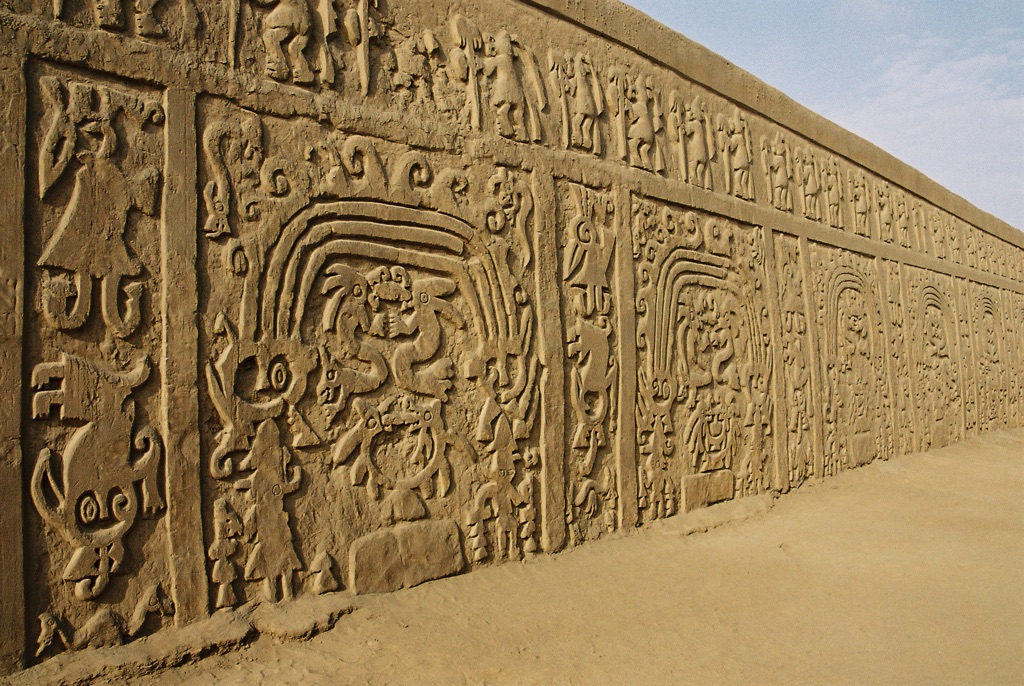
Historical Background of Huaca del Dragón
Origins of the Monument
Huaca del Dragón, a cherished site in Peru, reflects the legacy of the Chimu culture. It dates back to about 1000-1470 AD, blooming before the mighty Inca Empire rose to power. This impressive structure, formed from millions of adobe bricks, was a central part of the Chimu’s religious and societal life. Indeed, it stands as a solemn reminder of a powerful civilization that once thrived along the northern coast of Peru.
Symbolism and Cultural Importance
The name ‘Huaca del Dragón’ is steeped in imagery and mystique, often linked to its striking wall carvings that some say resemble dragons. However, it’s also known as ‘Huaca del Arco Iris’, or ‘Rainbow Temple’, pointing to its colorful past. These names allude to the intricate friezes that adorn its walls, depicting everything from celestial phenomena to daily life, securing its place in history as an icon of cultural richness and diversity.
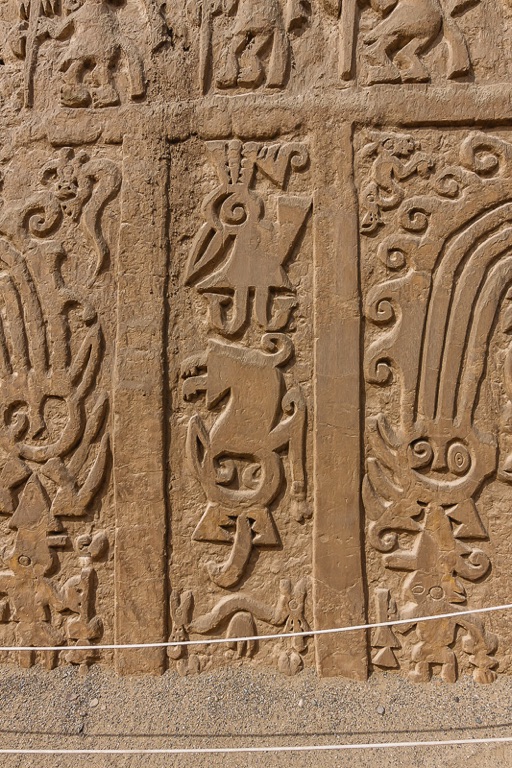
Architectural Marvel of Its Time
The complex itself is a marvel of ancient architecture, with a large rectangular base supporting what was once a towering pyramid. This well-preserved site boasts a network of ramps and plazas, hinting at its past role as a bustling center of activity. Notably, the emphasis on durability and strength in its construction speaks volumes about the Chimu’s ingenuity and their ability to master their arid and challenging environment.
A testament to the Chimu’s ingenuity lies within the site’s water conservation strategies. Ingeniously designed canals, still observable today, carried precious water resources to the monument, which sustained the surrounding community. Such sophistication in urban planning serves as a clear indicator of the Chimu’s advanced understanding of engineering and agriculture.
Today, Huaca del Dragón is not just an archaeological gem; it’s a bridge to the past. It offers valuable insights into the social hierarchy, religious beliefs, and rituals that defined the Chimu people. For modern visitors and researchers alike, the site provides endless opportunities for discovery and learning, keeping the Chimu’s ingenuity alive for future generations.
The Discovery of Huaca del Dragón
Unveiling the Ancient Structure
Huaca del Dragón first came to light during the expansion of urban areas in the early 20th century. Construction in the city of Trujillo led to its dramatic unearthing. Locals stumbled upon the monument, revealing its complex design hidden beneath centuries of sand. It has since become a key piece in Peru’s vast tapestry of archaeological sites.
Initial Documentation and Study
Renowned archaeologist Max Uhle played a pivotal role in Huaca del Dragón’s formal recognition. In the early 1900s, Uhle conducted extensive studies on the monument. His initial findings provided a foundation for understanding the Chimu culture. He also helped establish Huaca del Dragón’s significance within the community it once served.
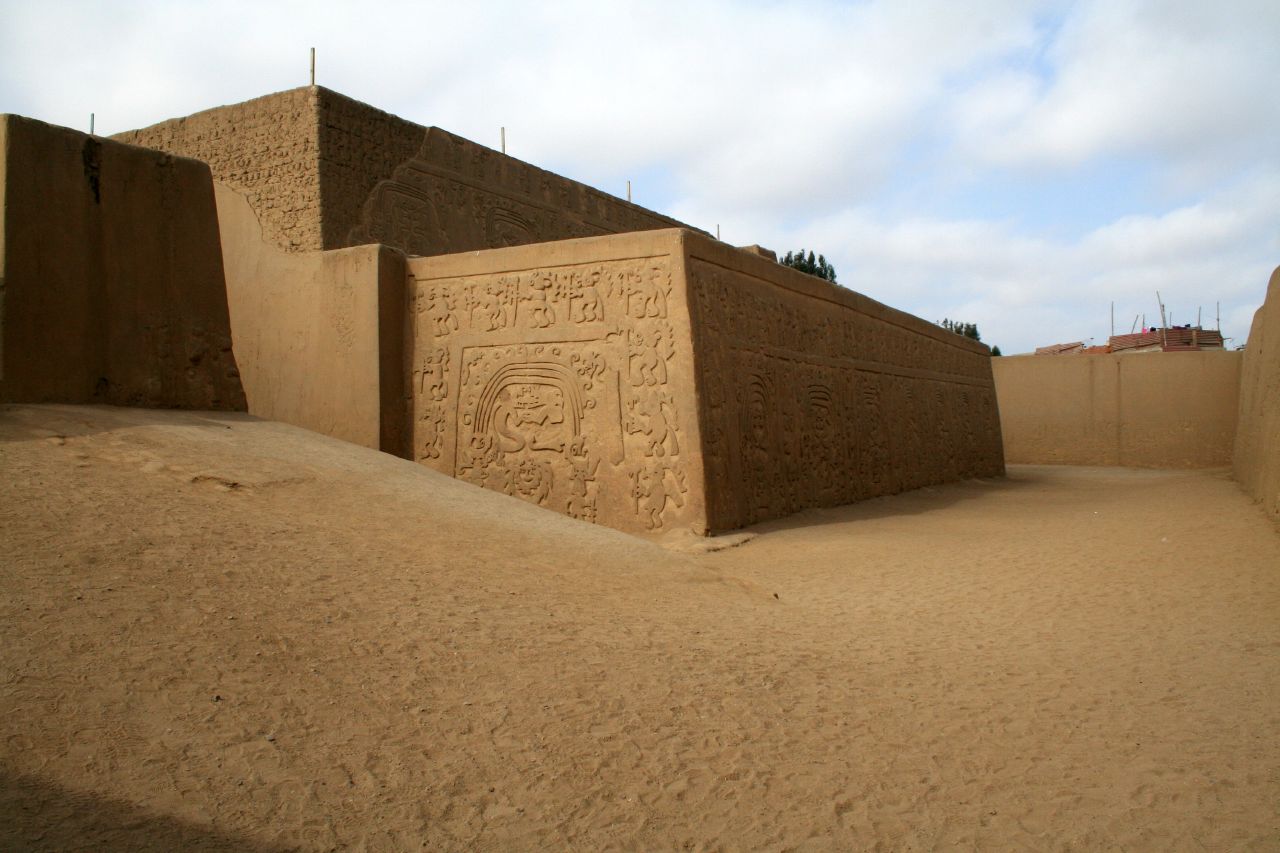
Impact on Historical Knowledge
The discovery of Huaca del Dragón significantly altered perceptions of pre-Columbian history. It filled gaps in the timeline of Andean cultures. Additionally, it offered insight into the transition from the Chimu kingdom to the Inca empire. Each carved figure and architectural detail added to historians’ knowledge of these ancient people.
The site’s introduction to the modern world also attracted interest from international scholars. As a result, Huaca del Dragón became part of Peru’s cultural heritage. This recognition brought about concerted efforts to protect and preserve it for educational and exploratory purposes.
Today, Huaca del Dragón continues to captivate those who visit. It serves as an inspiration for understanding the past. Moreover, it contributes to the identity of the local community. The monument reminds us of the grandeur that once characterized the pre-Incan northern coast of Peru.
Cultural Significance, Dating methods, Theories and Interpretations
Dating Methods Unravel Huaca del Dragón’s Era
Experts have applied relative dating methods to Huaca del Dragón, which determine age based on surrounding artifacts and stratigraphy. These methods suggest the site was built in the late Intermediate Period, aligning with the Chimu culture’s prominence. Radiocarbon dating of organic materials found within the adobe bricks has provided confirmatory evidence of the time frame, offering a clearer picture of when this magnificent structure took shape.
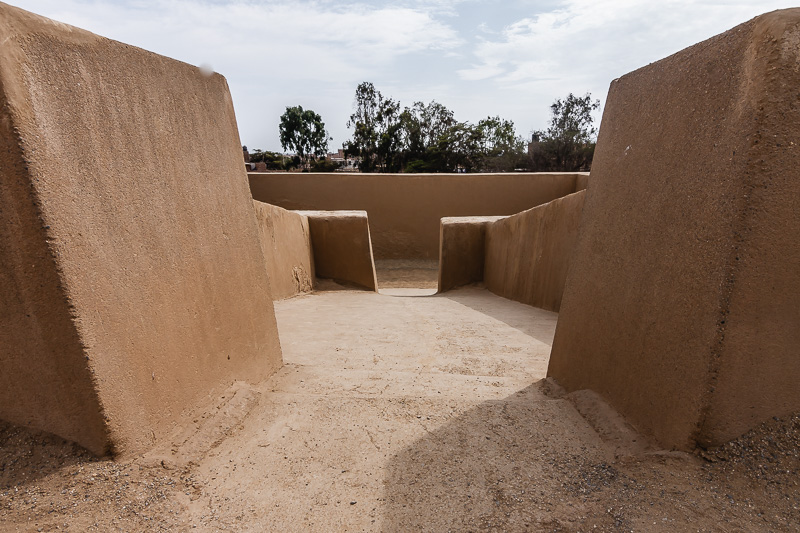
Understanding the Cultural Significance
Huaca del Dragón was a vital religious and administrative center for the Chimu. It functioned as an epicenter for communal gatherings, ceremonies, and governance, reflecting the society’s organization and belief system. The relief carvings also suggest that the site played an important role in delineating cosmological and mythological narratives, further emphasizing its central role in Chimu culture.
Theories Behind Architectural Features of Huaca del Dragón
Several theories exist about Huaca del Dragón’s design, with one suggesting that its layout aligns with celestial events. Others propose that the labyrinth-like entryways reinforced its sacred nature, creating a journey as one approached the inner sanctum. These interpretations are based on both the architectural evidence at the site and comparisons to other period-relative constructs, which together build a narrative about its creation and purpose.
Some scholars theorize that the water-related imagery points to a ceremonial place for water worship, a crucial element in the arid environment. These interpretations are backed by evidence of intricate canal systems that funneled resources to the site, underscoring the Chimu’s sophisticated water management techniques, and the importance of water in their worldview and survival.
The ongoing scrutiny of Huaca del Dragón contributes to a dynamic understanding of this historical gem, fueling further research and debate among historians and archaeologists. As studies progress, the site continues to shape our knowledge of ancient civilizations in the Andes, ensuring its revered status in the annals of pre-Columbian history remains unchallenged.
Conclusion and Sources
In conclusion, Huaca del Dragón is more than an archaeological site; it’s a portal to ancient times. As a significant representation of the Chimu culture, it serves as an irreplaceable source of historical and cultural knowledge. The insight gained through a study of its structure, carvings, and layout has deepened our understanding of pre-Columbian civilizations in South America. Through dedicated preservation and research, Huaca del Dragón will continue to enlighten us and enrich the world’s cultural heritage.
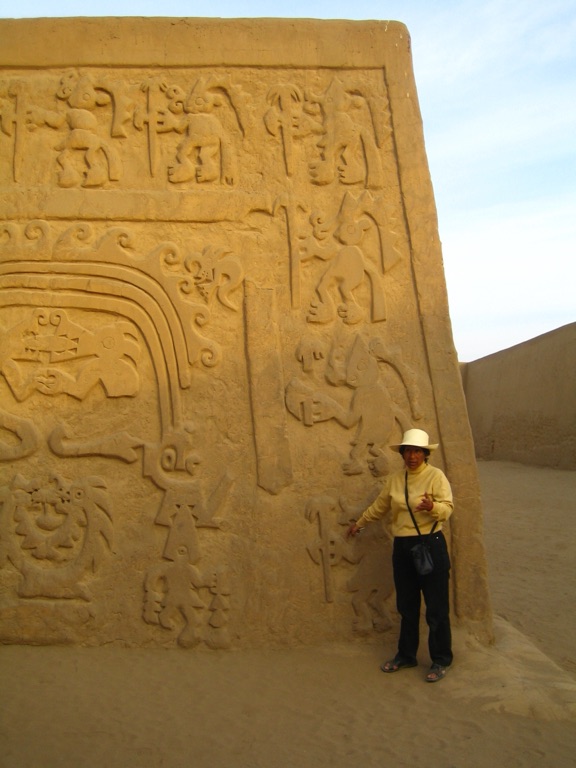
For further reading and to validate the information presented in this article, the following sources are recommended:
Or you can check any of these reputable archaeological and historical texts:
Kolata, A. L. (1993). The Tiwanaku: Portrait of an Andean Civilization. Cambridge: Blackwell.
Moseley, M. E. (2001). The Incas and Their Ancestors: The Archaeology of Peru (Revised Edition). London: Thames & Hudson.
Pozorski, S. and Pozorski, T. (1992). Early Settlement and Subsistence in the Casma Valley, Peru. Iowa City: University of Iowa Press.
Shimada, I. (1994). Pampa Grande and the Mochica Culture. Austin: University of Texas Press.
Topic, J. R. and Topic, T. L. (1987). The Archaeological Investigation of Andean Militarism: Some Cautionary Observations. In: Haas, J., Pozorski, S. and Pozorski, T. eds., The Origins and Development of the Andean State. Cambridge: Cambridge University Press.

